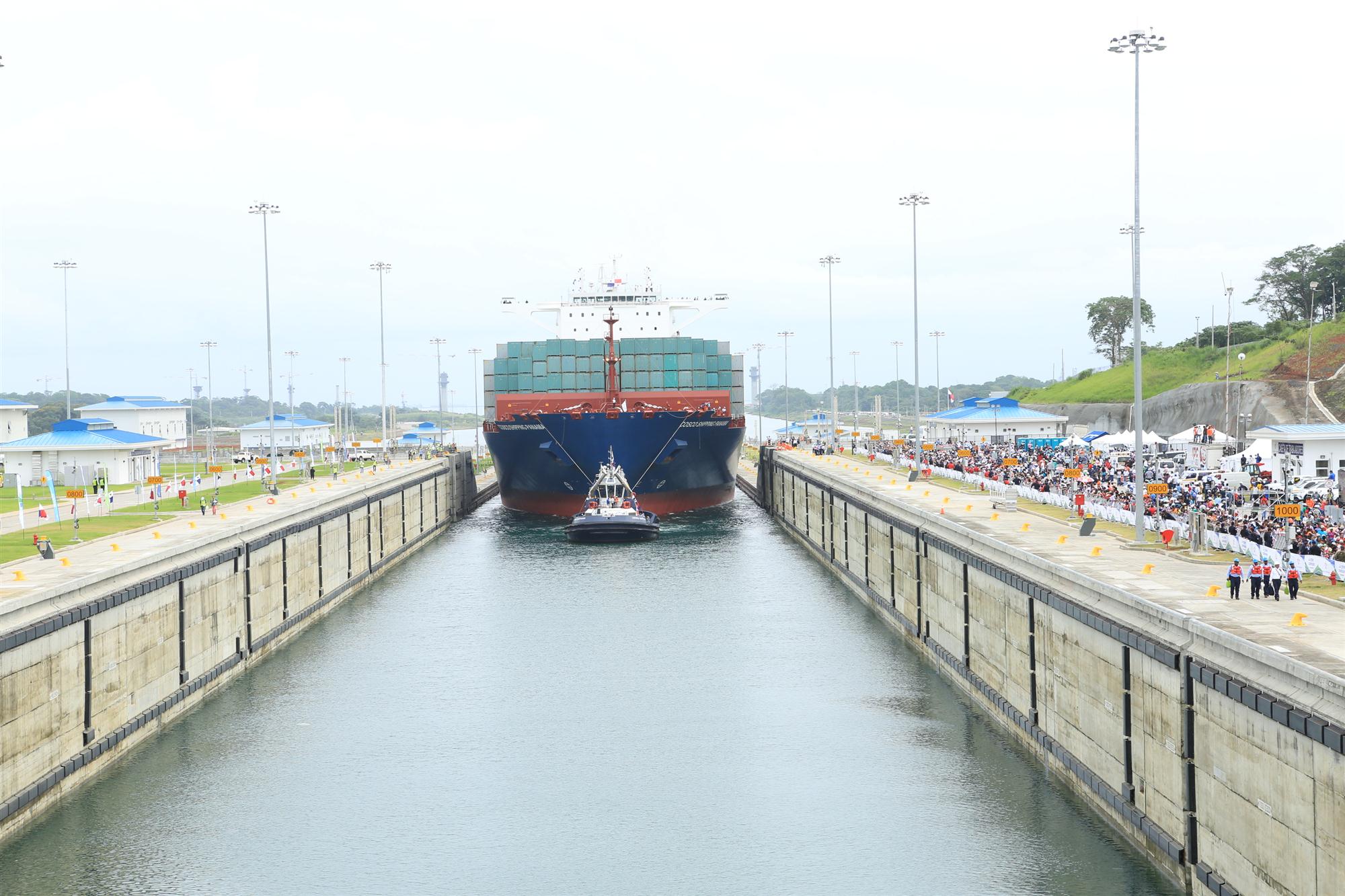The expansion of the Panama Canal is complete and the inaugural transit through the new set of locks has been made.
“More than 100 years ago, the Panama Canal connected two oceans,” said Jorge L. Quijano, CEO of the Panama Canal Authority, at the inauguration ceremony. “Today, we connect the present and the future. It is an honour to announce that what we did it together: providing this great connection to the world. This is the beginning of a new era.”
The first vessel to use the new canal was the 300-metre-long COSCO Shipping Panama, which passed through the Agua Clara Locks on the Atlantic side and ended its transit through the Cocolí Locks on the Pacific side. The ship was carrying 9,472 TEUs en route from Greece to Asia.

According to Manuel E. Benítez, deputy administrator of the Panama Canal Authority, planning for the new set of locks and the overall expansion programme began back in 1998.
“In 1997, there was a universal congress at which we knew that either we expanded the Panama Canal, or risked having an obsolete canal that would not cater to the larger ships that were going to be deployed around the world,” said Benítez, who was speaking at a media briefing on the day before the inauguration. “So we looked at several sizes and there was a trade-off between the size of the locks and the cost of the project.”
Construction of the US$5.25 billion expansion project began in 2007, consisting of a new set of locks on both the Atlantic and Pacific sides of the canal, as well as the excavation of more than 150 million cubic metres of material to create a second lane of traffic. The expansion allows the canal to accept vessels with capacities of up to 13,000-14,000 TEUs, compared to the 5,000 TEU limit before the new locks opened. Benítez said he thought that this is the right size, given the types of ships that are currently in use.
“During a referendum that we had here in Panama, many people even doubted that 12,000 TEU ships were going to be deployed,” he said. “We’re happy to say that when this canal opens tomorrow, 98% of the container ships that are in use today will be able to pass. Of course, looking the order books, we anticipate that by 2019 the percentage of ships that will be able to transit will be 95%. While questions have been asked about whether ships are going to grow forever, I think there’s a point of diminishing returns. We think that we can accommodate the ships that make this project economically feasible and that will bring the revenues that we expect.”
A project of this scale naturally brought along with it myriad difficulties. According to Ilya Marotta, executive vice president for engineering and project management, one of the biggest challenges was when the authority had to build a 2.3km dam to separate the waters of Miraflores Lake from Gatún Lake.
“The foundation of the dam was very fractured so there was a lot of grouting that we had to do,” she said. “We didn’t expect it to be that much so it was a big challenge and that took longer than expected. We also had issues with the concrete mix at the beginning because it was very thick and hard to place.”
Another big challenge involved the installation of the gates. “These range from 2,300 tons to 4,200 tons,” said Marotta. “The contractor decided to do the installation in the dry, so he actually ended up having to build very heavy structures like roads and docks to park the gates and wheel them down into the chambers.”
Despite the economic situation around the world and the state of the containerized shipping industry, Benítez was positive about the future of the canal.
“We reached a point where the new and bigger ships were pulling out,” he said. “We had customers like Evergreen and Maersk that switched to the Suez Canal. We’ve overcome that and now more and more are coming back because there’s an advantage in the Panama route, especially from Northeast Asia to the East Coast of the US. In addition to that, we have new markets opening up. For example, when we were planning this expansion, we did not have on our radar that the US was going to be a net exporter of gas and oil.”
The authority has received reservations for about 170 Neo-Panamax vessels, of which more than 140 are container ships, according to Benítez.
By Jeffrey Lee
Asia Cargo News | Hong Kong



